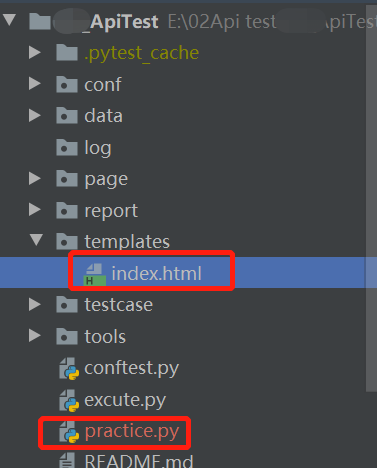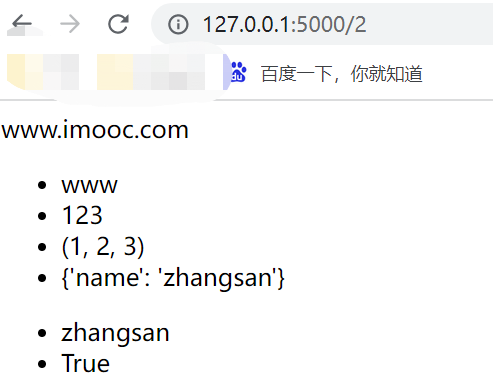Flask - jinjia2模板
一、前言
参考https://www.cnblogs.com/poloyy/p/14999797.html
没有前端基础,看的有些些复杂,只了解简单用法就行,后面做网站如果是用到这模板的话再深入学习吧。
二、目录结构
一般来说 templates 就是存放模板的目录,如果遇到下面的报错,要注意下目录结构:
jinja2.exceptions.TemplateNotFound: index.html

三、实战示例一
1、jinja2 模板代码
<!DOCTYPE html> <html> <body> <h2>My name is {{ name }}, I am {{ age }} years old</h2> </body> </html>
2、flask 代码
- 首先,需要 import render_template
- 然后,视图函数调用 render_template,对模板 templates/index.html 进行渲染
- render_template 包含有 2 个命名参数:name 和 age,模板引擎将模板 templates/index.html 中的变量进行替换
from flask import Flask, render_template app = Flask(__name__) @app.route('/') def index(): return render_template('index.html', name='tom', age=10) app.run(debug=True)
浏览器运行效果:

四、实战示例二
1、分界符
jinja2 模板文件混合 html 语法与 jinja2 语法,使用分界符区分 html 语法与 jinja2 语法。有 5 种常见的分界符:
- {{ 变量 }},将变量放置在 {{ 和 }} 之间;
- {% 语句 %},将语句放置在 {% 和 %} 之间;
- {# 注释 #},将注释放置在 {# 和 #} 之间;
- ## 注释,将注释放置在 # 之后
2、变量 语法
jinjia2模板中,使用{{var}}包围的标识符称为变量,模板渲染会将其替换为python中的变量,语法如下:{{ 变量 }}
3、jinjia2模板
包含有 3 种类型的变量:字符串、列表、字典,它们会被替换为同名的 Python 变量
<html> {{ string }} <ul> <li> {{ list[0] }} <li> {{ list[1] }} <li> {{ list[2] }} <li> {{ list[3] }} </ul> <ul> <li> {{ dict['name'] }} <li> {{ dict['age'] }} </ul> </html>
4、flask代码
from flask import Flask, render_template app = Flask(__name__) string = 'www.imooc.com' list = ['www', 123, (1, 2, 3), {"name": "zhangsan"}] dict = {'name': 'zhangsan', 'age': True} @app.route('/2') def index2(): return render_template('index2.html', string=string, list=list, dict=dict) app.run(debug=True)
列表的值包含字符串、数字、元组、字典,字典的值包含字符串、布尔值。
浏览器运行的效果:







· 阿里巴巴 QwQ-32B真的超越了 DeepSeek R-1吗?
· 10年+ .NET Coder 心语 ── 封装的思维:从隐藏、稳定开始理解其本质意义
· 【设计模式】告别冗长if-else语句:使用策略模式优化代码结构
· 字符编码:从基础到乱码解决
· 提示词工程——AI应用必不可少的技术